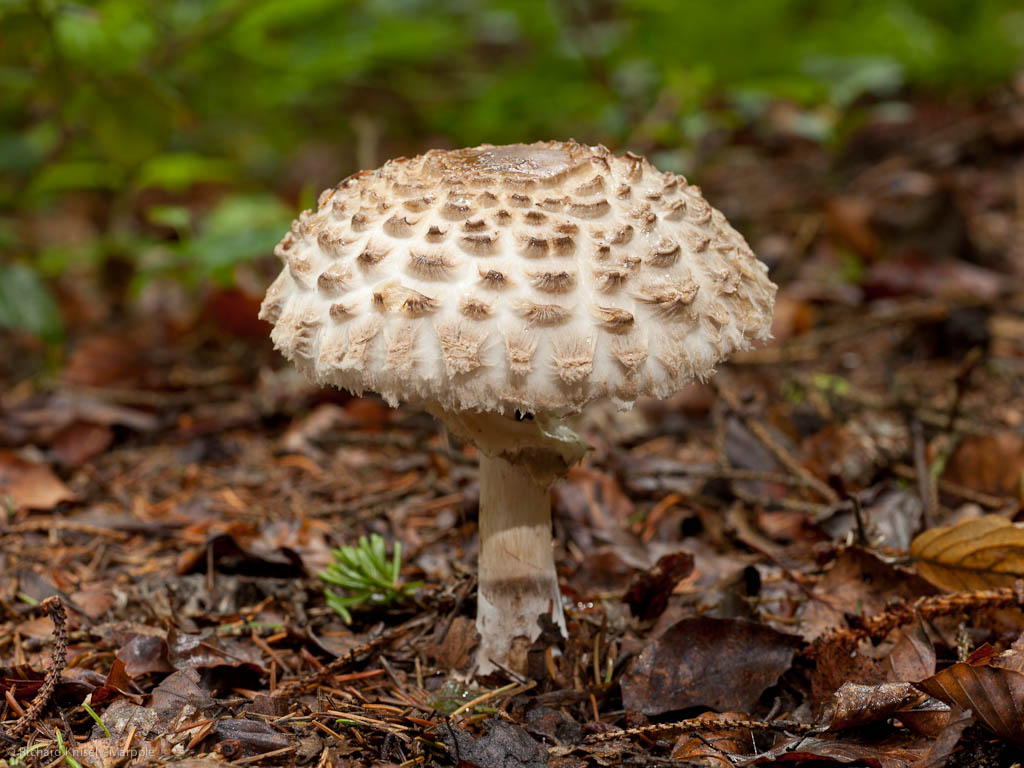Shaggy Parasol: Red Data Book of Armenia

Category. EN – Endangered.
Brief description. Cap is 10–18 cm across, the colour varies from grey to brownish, brown in the centre, spherical, then hemispherical, cracked, covered with large, seldom scales. Flesh is white, reddens when cut. Gills are free, lanceolate, with colarium, at first white then redish. Stipe is 10–25 x 1,5–2 cm high, light brown, with thickened bulb at the base. The ring is white, then brownish with scales. Spore print is white. Spores are 13,5–15 x 6–8 µm colourless, smooth, ellipsoid with germ–pores, with 1–2 drops of oil.
Distribution. Generally in Europe, North America, Australia, Southern Caucasus (Azergbaijan, Georgia, Armenia). In Armenia it is discovered in Ijevan floristic region – in "Dilijan" National Park; in the surroundings of Vanadzor; in Zangezur floristic region – in the "Plane tree grove" Reserve.
Ecological, biological and phytocenological peculiarities. In Armenia it rarely met, mainly on the soil, in broad–leaved forests, in greenhouses, on the altitude of 1700 m above sea level, in the months of June and October. Saprotrophic fungi on humus. The fruit bodies are edible.
Main factors of endangering. Limited distribution, degradation and breakdown of ecosystems, loss of habitats of forest areas caused by uncontrolled felling.
Nature conservation measures. In Armenia it is conserved in corresponding ecosystems of "Dilijan" National Park and in the "Plane tree grove" Reserve. It is necessary to carry out monitoring of the state of discovered populations and discovering new habitats.
Suggestions
 The Ministry of Environment sent a letter international partners to draw their attention to the real danger of environmental disasters as a result of Azerbaijan's large-scale aggression towards the territory of Armenia
The Ministry of Environment sent a letter international partners to draw their attention to the real danger of environmental disasters as a result of Azerbaijan's large-scale aggression towards the territory of Armenia
 Vicia pisiformis: Red Data Book of Armenia
Vicia pisiformis: Red Data Book of Armenia
 Vavilovia formosa: Red Data Book of Armenia
Vavilovia formosa: Red Data Book of Armenia
 Trigonella capitata: Red Data Book of Armenia
Trigonella capitata: Red Data Book of Armenia
 Trigonella astroides: Red Data Book of Armenia
Trigonella astroides: Red Data Book of Armenia












